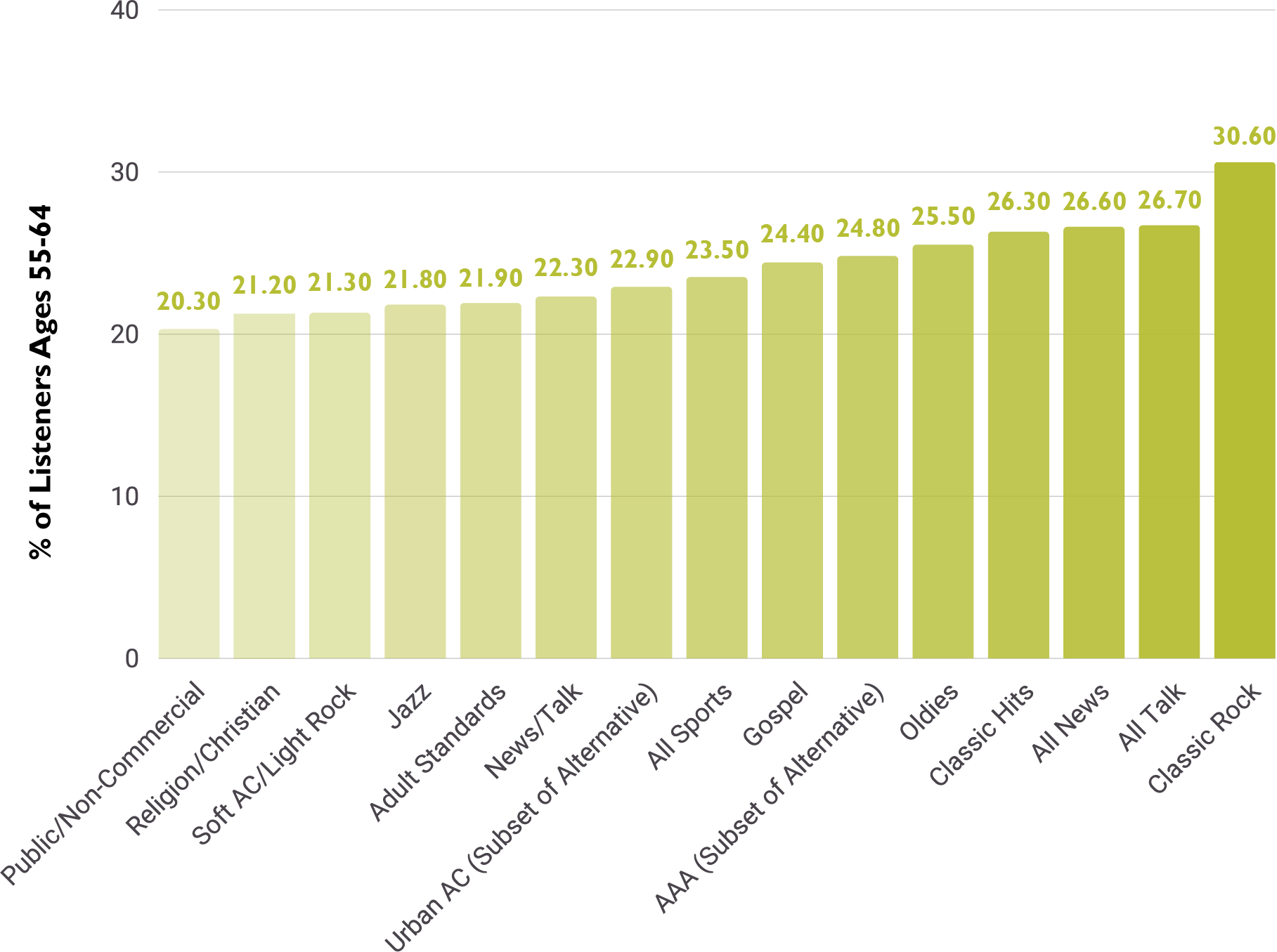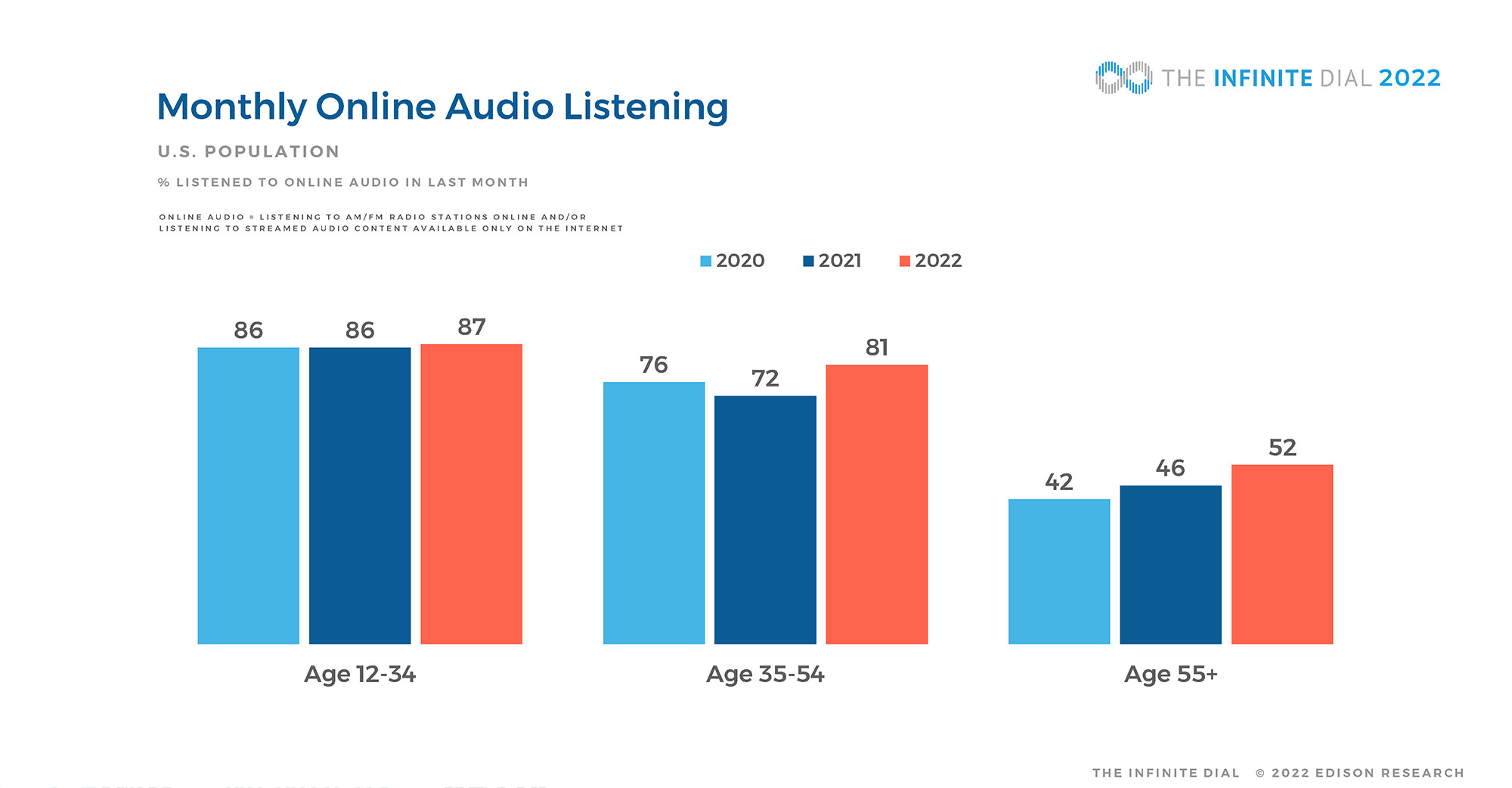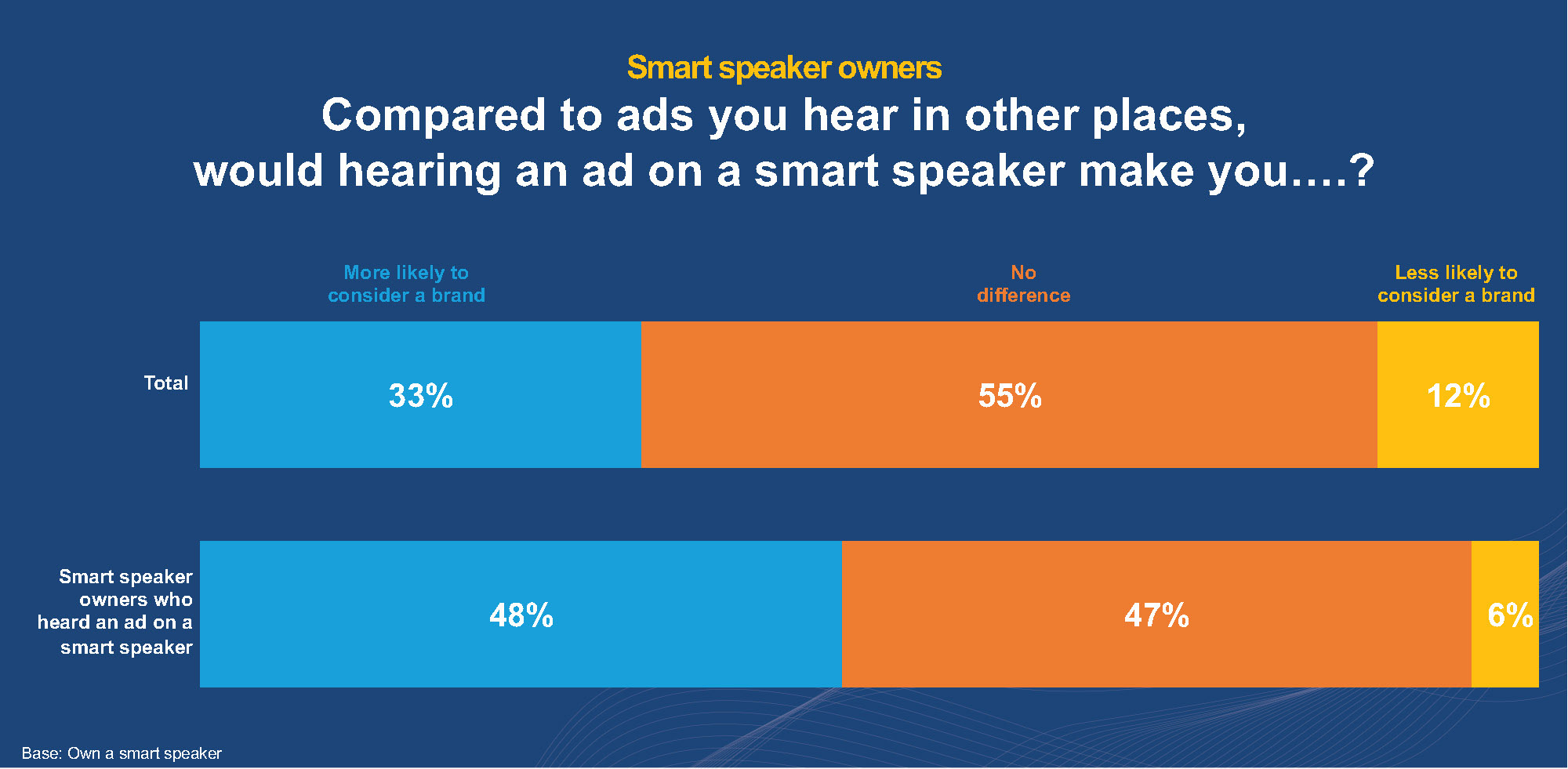Back in 2010, we extolled the benefits of using radio to market to Baby Boomers. But we warned you then that very soon traditional radio wouldn’t be the only game in town. Well, we were right, and we were wrong. The era of audio marketing is upon us. With increasingly tech-savvy seniors, it can be a smart addition to your integrated marketing strategy. But for those marketing to Baby Boomers and beyond, the (no longer new) medium of radio is still an incredibly effective way to reach a targeted older audience.
Radio: Is your audience listening?
How has traditional AM/FM radio fared in this new age of audio marketing? Quite well, actually. According to the most recent Nielsen Total Audience Report, 88% of U.S. adults listen to radio each week, the highest reach across platforms. What’s more, adults ages 50–64 and 65+ spend more time listening to radio than any other age group, averaging just over 12 hours per week.
Q3 2020 Weekly Reach Percentage
%
Radio
%
App/web on a smartphone
%
Live + time-shifted TV
%
Internet on a computer
%
Internet-connected device
%
App/web on a tablet
%
Game console
%
DVD/Blu-ray device
Adult standards, classical, jazz and news/talk formats are especially appealing to those ages 65+, with the share of listeners ranging from about 40 to 60% in each of those formats. Interestingly, consumers ages 55–64 are much less concentrated, listening to a wider variety of formats, with only classic rock breaking 30%:
Share of Listeners by Format

Radio has also been smart — traditional radio stations are also in the digital game by offering their broadcasts via the web. That means the audience can follow them from the car to their home or office and back to the car, which means your messages will follow, too. Edison Research’s Infinite Dial report — the longest-running survey of digital media consumer behavior in America — found that 52% of adults 55+ listened online in 2022, up significantly from when we last reported on this trend in 2018, when the percentage was 33%. (Other age groups have remained flat or increased by much smaller percentages during the same period.)

Also consider that consumer trust in advertising differs across channels. Legacy platforms such as radio and TV still command the highest share of collective trust in advertising, Nielsen says. Of 50+ adults, 51% consider radio spots very or somewhat trustworthy. Compare that to social media, where only 25% of 50+ adults consider ads to be very or somewhat trustworthy — in other words, 50+ consumers consider radio ads to be more than twice as trustworthy as social media ads.
Beyond radio: Audio marketing for Baby Boomers
Audio marketing = radio marketing for the modern age. It’s still capturing your audience through dynamic auditory ad spots, but the devices and programs on which these ads can be heard are more plentiful. Audio marketing gives you the opportunity to better target older adults based on their preferences for certain delivery mechanisms or even specific programs. Basically, with the advent of podcasts, streaming radio services like Pandora and Spotify and smart speakers like Amazon Alexa or Google Home, your marketing choices have significantly expanded beyond the AM/FM dial.
According to the Infinite Dial report, 22% of those ages 55+ listen to podcasts monthly, up from 17% in 2019. For senior living providers exploring ways to market to adult children, a podcast may be effective: 43% of those ages 35–54 listen monthly.
But why choose to advertise during a podcast? As more of us expect our media to be delivered on demand, podcasts have emerged as a low-cost, convenient and accessible form of entertainment. You can decide which shows to place ads in to stand out to your audience, and podcasts are hosted across multiple platforms and devices. That means it’s easier than ever to reach a wide swathe of people, increasing your overall brand awareness. Plus, new tracking capabilities make it possible to track effectiveness.
Podcast listeners are also avid users of smart speakers. According to NPR and Edison Research, 39% of smart speaker owners listen to podcasts weekly on their home devices (Amazon Alexa, Google Home, etc.). That percentage has increased by 22% over the past 5 years.
It also seems that as more consumers listen to free, streaming media, they know that advertisements are a part of using these services. Research has shown that most people don’t mind various types of ads, and 48% of smart speaker owners say they’re more likely to consider a brand after hearing an ad. And, 80% of those owners who have heard an ad agree that brands that advertise on smart speakers are innovative. So don’t be afraid that your ads will be skipped or ignored!

Capture your audience
To capture your target audience, you may need to think beyond the airwaves and discover where and how your prospects are listening to audio content. Evaluate whether testing a new medium in addition to traditional radio makes sense as part of your comprehensive integrated marketing strategy.



